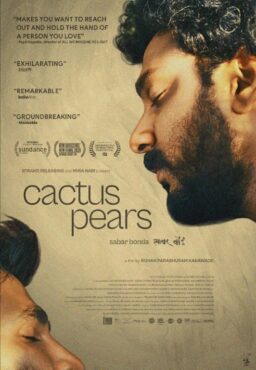The following article was originally published in May 1992.
There was once a time when popular American movies told the
stories of adults. Now they tell the stories of adolescents, of all
ages; the values and thoughts of most Hollywood movie characters are no more complex or interesting than those of the typical teenager. Even characters in their 30s or 40s behave in a simpleminded, narcissistic way, and rarely do they have serious opinions about anything.
An example: Last week at the Cannes Film Festival, two films
played within a few days of each other. In a sense, they both told
the same story, set a few generations ago: A plucky young man from
common stock falls in love with a rich man’s daughter. Her parents
oppose the union, but love conquers all. They set out together to
make a life in an isolated farming area.
One of those films was Bille August’s “Best Intentions,” with a screenplay by Ingmar Bergman. The other was Ron Howard’s “Far And Away.” The Swedish film won the Palme d’Or as the best film in the festival. The Hollywood film played as the closing night gala, as mobs surged against police barricades for a better look at its stars, Tom Cruise and Nicole Kidman.
“Best Intentions,” inspired by the story of Bergman’s parents, was about a young divinity student with radical ideas, and the strong-willed young woman who follows him into the wilderness, but eventually longs to return to the civilization of the city. “Far and Away” was about the son of a poor Irish farmer, whose landlord raises the rent until he can no longer afford to pay. When the landlord’s agents burn down the farmer’s house, the young man sets off for the city to kill the landlord, but through a series of coincidences falls in love with the rich man’s daughter, who wants someone to accompany her to America. Together they join the great Oklahoma land rush.
I do not seriously expect the world’s movie audiences to embrace “Best Intentions,” with its unknown actors, instead of “Far and Away,” with Tom Cruise. But comparisons between the two movies are revealing. “Best Intentions” helps us to understand the world and think more carefully about it, and “Far and Away” encourages us to see the world in an immature and simplified form. Both are love stories, but the Swedish film is about people who fall in love with each other’s deepest and most noble impulses, and the American film is about puppy-love between two silly twits without a brain in their heads.
Consider some of the things they talk about–or, in the case of “Far and Away,” do not talk about. The young Lutheran minister in “Best Intentions” is concerned with the role religion plays in the modern world. In his spartan new parish in the cold northern forests of Sweden, he tries to bring progressive ideas to a church board dominated by conservative elders. When his wife’s family pulls strings with the royal family to get him a prestigious job in the city, he goes for a meeting with the queen, but is appalled to find himself toadying to her, and decides his true place is with the common people of his parish. The movie is not about abstract theological issues, but about the role of faith and worship in a real society.
Now look at “Far and Away.” We know from the early deathbed scene involving the father that the poor family is Catholic. It is clear to anyone who knows anything about Ireland that the family of the Nicole Kidman character would be Protestant. To most young Irish people of the 19th century, that would have been a divide even deeper and more important than the class distinctions between them. Religious identity for centuries has been the crucial element at the center of Irish life–one charged with as much passionate history as race differences in this country.
Yet here is a film with pretensions of being about historical Ireland, which chooses to treat that reality as if it never existed. When Kidman’s parents try to get her back from Cruise, do they say anything about her marrying a Papist? Are religious identities discussed at any time by anybody in the movie? No, of course not, because that would allow a faint whiff of the real world, of actual history, to drift into the movie’s fairy-tale romance. So deeply does that reflect Hollywood prejudices against serious subject matter that I’ll bet the makers of “Far and Away” never even thought about it–such things go without saying.
The baby gets thrown out with the bath-water. By making its characters so shallow, “Far and Away” prevents me from caring about them. I have about as much interest in their eventual union as I would about a couple of love-birds in the dime store. Sure, they’re sweet and good-looking, and I wish them all of the best, but I’d hate to have to make small-talk with them for 15 minutes at a stretch. They have little to say, and no frame of reference outside their own tiny worlds, which are defined by what they want and how they can get it.
The love story in “Best Intentions” is much more moving, because the two characters really see and hear one another. They are two strong individuals, who try to share a common destiny despite deep differences of opinion. They work at marriage, and they work at getting to know one another’s deepest thoughts and feelings.
Am I being unrealistic here? I can almost hear a studio executive defending “Far and Away” on the grounds that it is intended as entertainment, not as some sort of social message. Of course it is. But in Hollywood movies in general , few attempts are made to create characters with any religious, political or social beliefs. When was the last time you saw an American movie in which anyone was either a Republican or a Democrat? Even in barbed political satires like Tim Robbins’ new film “Bob Roberts,” we are left to guess the identity of the candidate’s party.
Hollywood is afraid to offend. It is afraid, perhaps, that if “Far and Away” identified the home-burning landowners as Protestants, audiences would be offended. I wonder if that’s so. I am more offended when a movie considers me incapable of dealing with the facts of the real world, and gives me an Ireland without history rather than risk controversy.
American entertainment conglomerates give us hundreds and thousands of movies and television shows like this, all of them maintaining the pretence that no one believes in anything. Issues are never discussed. No one ever has an argument about opinions of substance. Decisions are based on emotion and desire, not on intelligent choice. Instead of a young pastor who wants to stay in the northern woods because he believes that is God’s plan for him, we get a young fist-fighter who wants to go to Oklahoma because he hears they’re giving away land– for free! As I heard that line of dialog in the movie, there was an echo in my mind of a looter, justifying herself to a TV reporter in Los Angeles: “It’s free!”
The mass media in America, which creates the fantasies which help to shape our lives, have largely abandoned the notion that people should think seriously about th eirm lives. Motivation comes from the shorthand of lust, greed, love, hate and fear. Never from an idea of what is right. Why were we so surprised when so many people of all races and backgrounds gleefully joined in the Los Angeles looting? Their role-models are all about us, in the movies and on television.
A society that treats its citizens like children is sooner or later going to find itself without adults.












